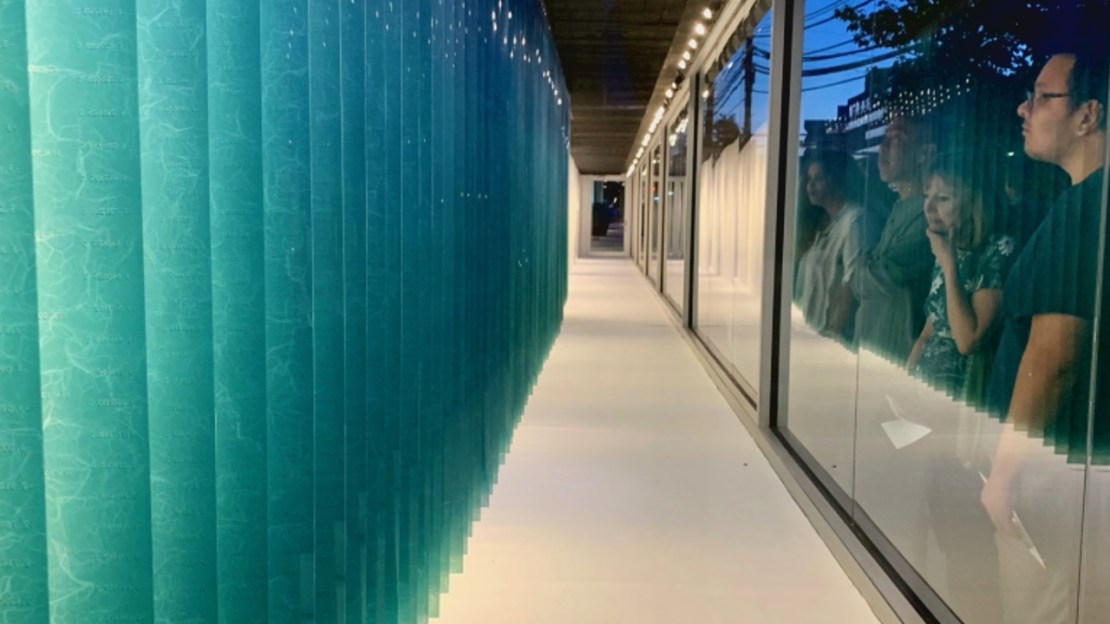John Tolley, April 30, 2020
What is the light like within the Arctic sea ice? How does a rainstorm appear frozen in time?
These seemingly impenetrable questions are not from a book of Zen koans. Rather these questions form the heart of installation artworks by University of Maryland professor Cy Keener.
Anything but static, his work undulates and percolates with the rhythms of our planet.
?I think the focus of my art right now is really on trying to find these moments that I?ve experienced outside,? says Keener, an Assistant Professor of Sculpture and Emerging Technology. ?These moments of abstract beauty; just trying to find a way to share those with the audience, make those more accessible, bring those into a gallery setting or to a museum setting. To enable people to experience these things, or a version of these things that I?ve seen outside.?
An eclectic path of training informs his unique artistic expression. Keener has a Bachelor?s in Philosophy and a Master?s in Architecture in addition to his MFA. He is as steeped in science, engineering, technology and math as he is in sculptural form, color theory and tone.
It?s a background that has served Keener well as he creates pieces of art that weave together raw scientific data and vivid installations of light and motion. It?s a feat he accomplishes through sensors and programming of his own design, tools, he says, that are not unlike a camera to a photographer.
?I?m using sensors and scientific instruments and technology to find these moments outside that I can record and that I can recreate inside of a gallery setting,? he explains. ?I think of the technology as a way to create a portal between two places, whether it?s the Arctic or whether it?s a glacier in Switzerland, and sort of use satellite communication to link those places so that you get a sense of what?s going on in this far off place that you?ve never really been to.?
One of Keener?s recent installations, Digital Ice Core, takes viewers deep inside the Arctic sea ice. Traveling with a scientific expedition, he embedded his array of sensors, capturing light and temperature readings, into holes in the fragile ice. The ever-changing light inside the ice fed into an illuminated sculpture that translated it into a haunting glow.
The interdisciplinary culture fostered at Maryland makes such a project, one that shares the core properties of scientific inquiry, possible. The university thrives on and encourages collaboration across its campus.
?The big kind of advantage of Maryland has been just the open access to people in other departments,? Keener says. ?There?s a giant NOAA [ed. National Oceanic and Atmospheric Association] facility that?s literally on campus. My whole arctic collaboration came about through meeting someone at NOAA through someone at the University of Maryland. There?s an oceanography department, there?s atmospheric science, I?ve collaborated with the geologist who works on rivers. To me the opportunity is to really see the university as a kind of tool for making art, and a tool to find people to collaborate with.?
Conversely, Keener is able to use his expressive talents to aid Maryland scientists, many of whom are working tirelessly to protect our environment, in communicating their work.
?What I can bring is this ability to help them communicate their story or help them communicate the thing that they?re researching,? he notes. ?One of the researchers, she?s working on this sort of sea-ice interface and over her career she?s going to spend thirty or forty years working on that. But it?s really hard for her to share that with the public, and so then what I can do is come up with these ways of kind of visualizing things in a dramatic fashion that can help her kind of bring these insights to the public.?
It?s work that looks beautiful to us.







